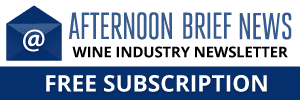Retailers should take advantage of cheap bulk wine to create private label entries.
By Jeff Siegel
Trader Joe’s private label wine Charles Shaw, the legendary Two-buck Chuck, helped rescue the wine business from its mid-1990s grape glut with its $1.99 price tag. Can a similarly themed, inexpensive private label (perhaps one now working its way through the supply chain) do the same thing with the current bulk wine and grape oversupply?

“There are certainly some products like that,” says Steve Fredricks, president of Turrentine Brokerage in Novato. “Now, maybe not to the degree that we would like — and there could be more — but there are people out there trying to do just that.”
Identifying the opportunity
This year’s Silicon Valley Bank report identified private label wine — wine sold only at one retailer, such as Charles Shaw and Costco’s Kirkland brand — as gaining ground as bulk prices continued to fall. The caveat, say analysts, is that it’s difficult to get a handle on private label sales, since many retailers don’t identify their private label wines as such.
The best estimate? Private label wine could account for low double digits in percentage terms of U.S. wine sales. Still, sales do seem to be growing — retail private label alcohol in the United States increased 18.1% in volume between 2023 and 2024, according to the Private Label Manufacturers Association trade group.
And how much have bulk prices fallen? To as low as $5 to $10 per gallon for AVA fruit, with some prices as low as $3 a gallon, says Fredricks. That compares to $10 to $25 per gallon when the market is more balanced. Another incentive, he says, is the opportunity for lower packaging costs, since packagers are also seeing demand slow during the slump. Grape prices were so low when Two-buck Chuck debuted that the packaging cost more than the wine.

“There’s definitely been an uptick in private label interest,” says Darryl Brooker, CEO of LWX, a private label producer in Danville, Calif. “In fact, this is the best market for prices for private label in so long that many of the younger retail buyers haven’t seen anything like it in their careers.”
Already on shelves?
One possibility for a private label leader could be Grocery Outlet‘s new $4.99 Second Cheapest Wine, launched as part of the discount grocer’s Spring wine sale this month in its West Coast stores. The retailer declined to be interviewed for this story, but its news release reported the label will feature Chardonnay from Napa Valley and Sonoma County, a Cabernet Sauvignon from Alexander Valley, a Sauvignon Blanc from Sonoma Valley and a Pinot Noir from Oregon’s Willamette Valley. The name, said the statement, is a play “on the viral TikTok trend that spoke to the allure of ordering not the cheapest, but the second cheapest wine.”

The biggest question is whether more mainstream retailers, who don’t necessarily focus on discounting, will carry less expensive wines despite continued premiumization. Fredricks says this remains a serious obstacle, as these retailers don’t see much demand for wines costing less than $15.
On the other hand, Brooker reports that a variety of national retailers are looking for just that, including some of the biggest names in grocery. He says near-record low bulk prices make it possible to sell inexpensive wine and still get private label margins that can be twice that of national brands.
Which is a good thing for the bulk market, retailers and consumers.
___________________________________________________________

Jeff Siegel
Jeff Siegel is an award-winning wine writer, as well as the co-founder and former president of Drink Local Wine, the first locavore wine movement. He has taught wine, beer, spirits, and beverage management at El Centro College and the Cordon Bleu in Dallas. He has written seven books, including “The Wine Curmudgeon’s Guide to Cheap Wine.”




